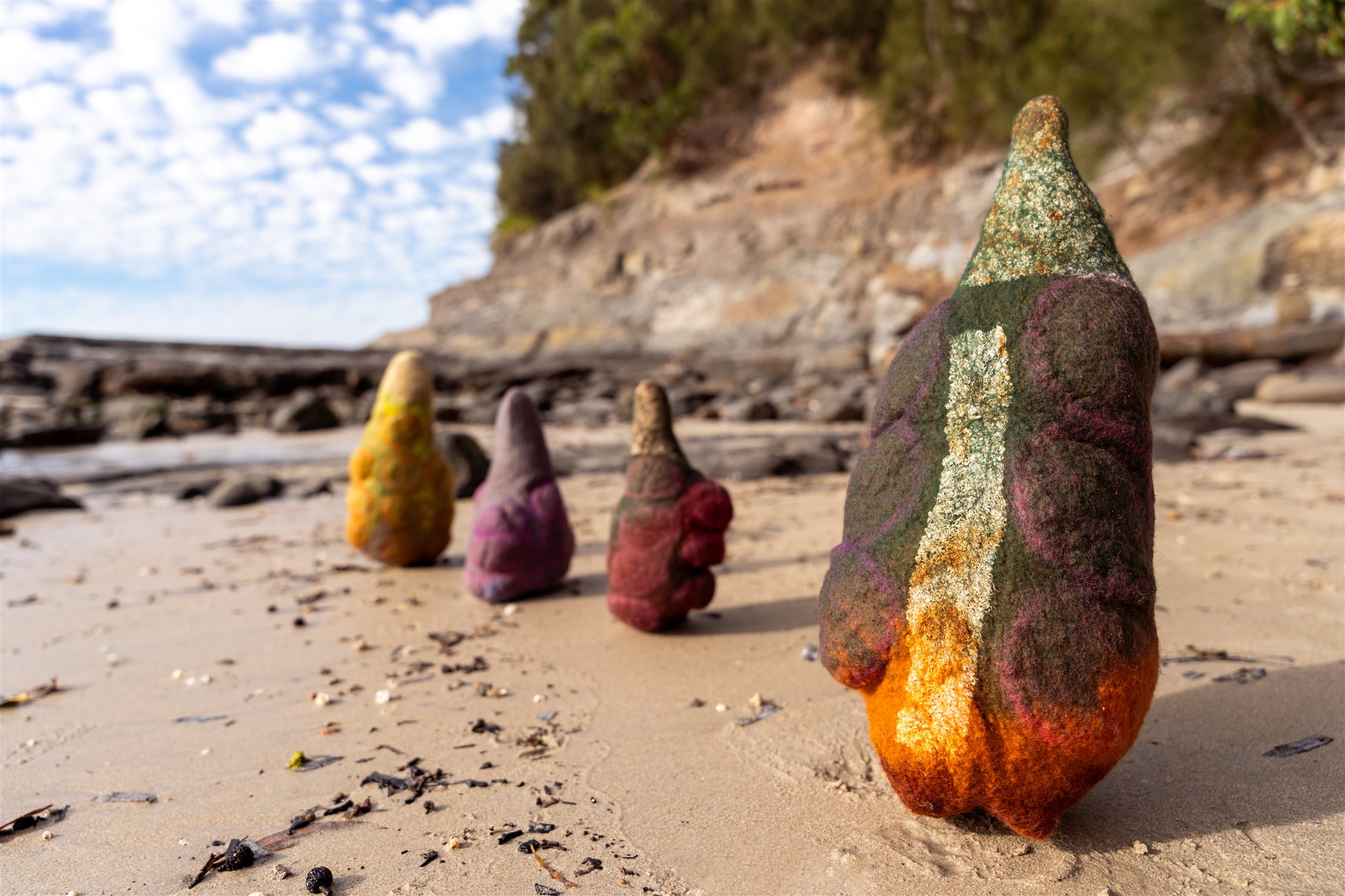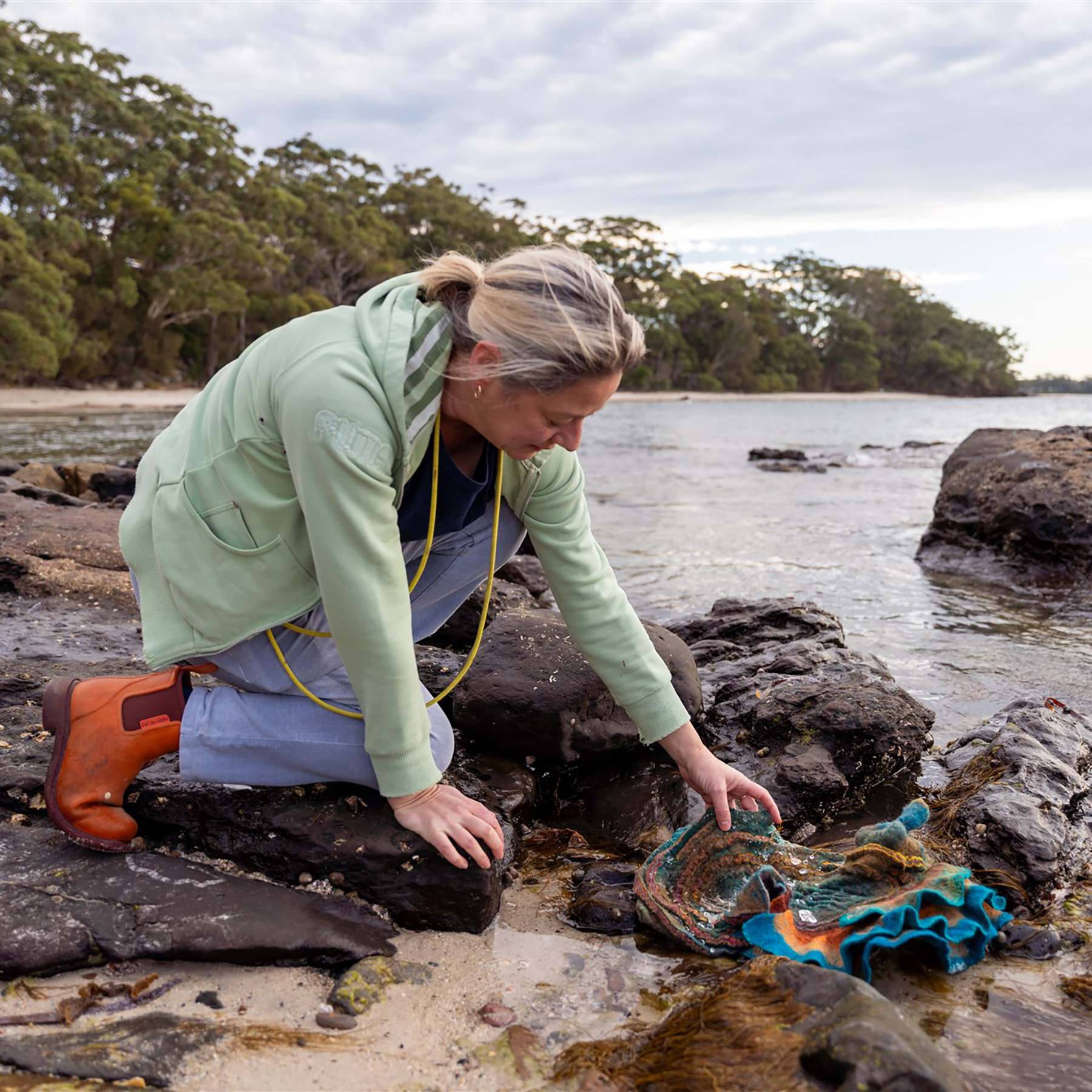
Sentinels in the Sand
Sentinels stand along the shoreline. Their gaze both judgment and portent; embodying possibilities, they signal bleak dystopia or harmonious fertility. The bulging cones, undulating curves, ridged layers recollect the predominant vegetation along the dunes. Banksia and hakea, seaweed and lichen, sedimentary rock platforms and white sands, a turquoise sea in a prehistoric basin of deep sandstone cliffs and submerged reefs. This landscape bears the scars of post-colonial vandalism and calls us to consider the consequences of unrelieved tension between the opposing philosophies of Custodianship and Ownership.
Sentinels in the Sand is a new series of works, created in response to over a decade of living and working in, and soaking up, the Jervis Bay landscape, its nature, culture and rich layers of history. Designated a marine park in 1998, this unique coastal environment is a haven for life, remaining relatively unspoilt and undeveloped, yet never completely safe from human greed.
Beachfront vandalism continues to occur under the cover of darkness, with stretches of dune habitats poisoned in front of million-dollar holiday houses for the pointless sake of water views. Despite a nearly catastrophic impact of erosion from clearing the dune vegetation in the 1960s, this illegal action takes place to this day.
More instances of environmental and cultural vandalism continue in our coastal villages -sacred trees removed by a deceitful developer while the locals fight for heritage protection; a First Nations community poisoned for decades from toxic runoff from the nearby naval base; the threat of cruise ships being allowed into this marine park conservation area.
The materiality of these Sentinels is made more significant by their installation into the environment that inspired their genesis. Their mimetic qualities root them into place while their anthropomorphic awareness hints at comment on both social and environmental issues specific to this area whilst also universally connected to broader climate change concerns.
The materials of their construction, the Australian-grown merino wool, dyed with Australian-made dyes, and scant embellishment of cotton and silk, are all biodegradable and would not leave a trace upon the earth if they were left to break down. Yet these materials will also last for generations, if they are valued and cared for as we treat heirloom textiles, because despite their softness, they have enduring qualities.
The cones, wet felted over a resist, appear to be bulging with seeds secure in their sheaths beneath the surface, an effect of cut segments of prefelt layered under the outer ‘skin’ of wool. The surface of the cones, rough, spotty, bearing signs of the flowers that have dried and fallen, created with rust-dyed muslin, silk throwsters waste and wool nepps.
The strata of the curved forms, created from many layers of wool in a complementary palette, pre-felted and stitched into ridges, are revealed by cutting. Central resists within the layers are opened to cavernous tunnels, and petal and frond-like fingers.
The softness of these forms – as opposed to the conventionally hard materials of traditional sculpture, the stone, ceramic, wood that is tamed under the hand – belies their endurance. These Sentinels, in their knowing, are challenging the viewer to underestimate their dire warnings.
As Australia approaches one of the most significant markers in our national identity and future, a referendum to enshrine a First Nations Voice into our constitution, the task is to ask ourselves, what kind of people do we want to be? It is a painfully poignant moment to reflect on the wholesale damage that colonisation wrought upon these lands, waters, people.
